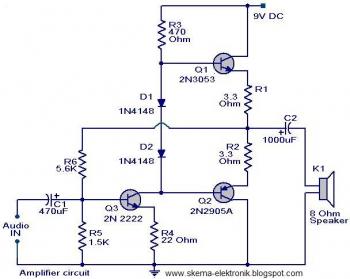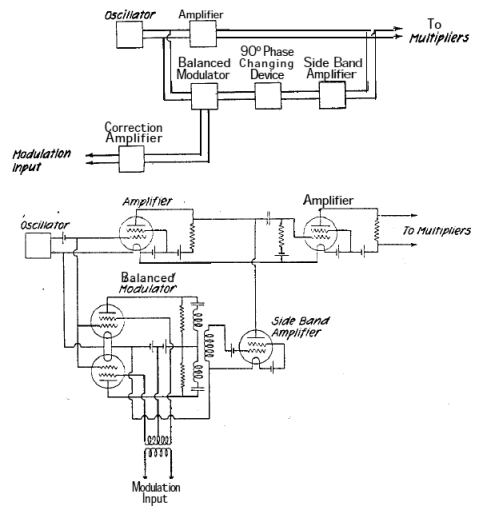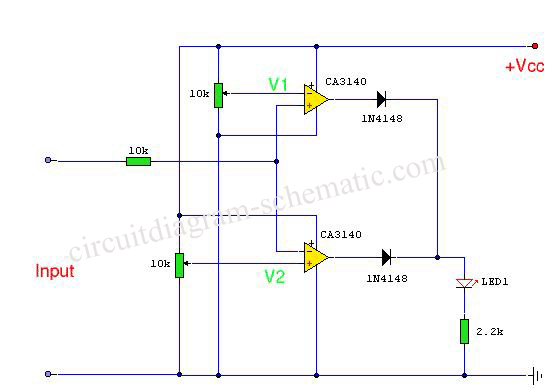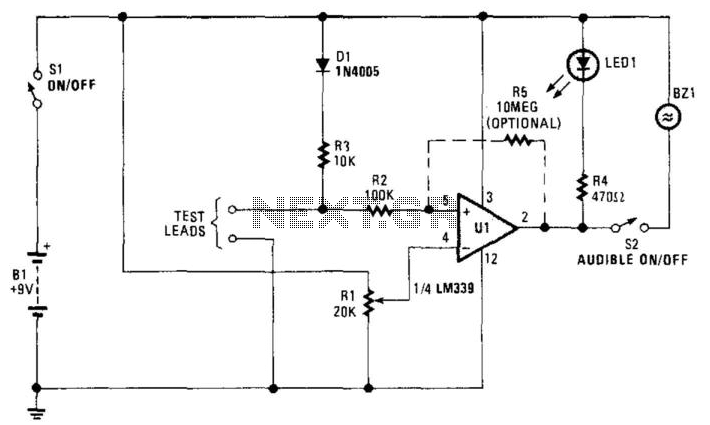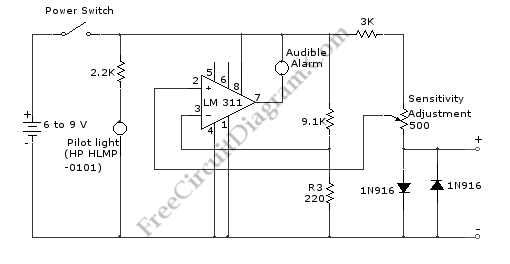
Simple continuity checker

The pitch of the tone is dependent upon the resistance under test. The tester will respond to resistance of hundreds of kilohms, yet it is possible to distinguish differences of just a few tens of ohms in low-resistance circuits. Q1 and Q2 form a multivibrator, the frequency of which is influenced by the resistance between the test points. The output stage Q3 and Q4 will drive a small loudspeaker or a telephone earpiece.
The described circuit functions as a resistance tester that utilizes a multivibrator configuration to generate audio tones based on varying resistance levels. The primary components, Q1 and Q2, are configured as a bistable multivibrator, which produces oscillations at a frequency determined by the resistance connected to the test points. The circuit is capable of measuring resistances in the range of hundreds of kilohms while maintaining sensitivity to small changes in resistance, allowing for the detection of variations as minor as tens of ohms, particularly in low-resistance scenarios.
The output stage, comprising transistors Q3 and Q4, is designed to amplify the oscillating signal generated by the multivibrator. This amplified signal is then used to drive a small loudspeaker or a telephone earpiece, converting the electrical oscillations into audible tones. The frequency of the output tone directly corresponds to the resistance being measured, providing an intuitive auditory indication of resistance levels.
In practical applications, this circuit can be utilized for testing and troubleshooting electrical components, ensuring that resistance values fall within specified ranges. It can be particularly useful in scenarios where quick assessments of circuit integrity are necessary, such as in maintenance and repair tasks. The simplicity and effectiveness of this resistance tester make it a valuable tool in electronics engineering and related fields.The pitch of the tone is dependent upon the resistance under test. The tester will respond to resistance of hundreds of kilohms, yet it is possible to distinguish differences of just a few tens of ohms in low-resistance circuits. Ql and Q2 form a multivibrator, the frequency of which is influenced by the resistance between the test points.
The output stage Q3 and Q4 will drive a small loudspeaker or a telephone earpiece.
The described circuit functions as a resistance tester that utilizes a multivibrator configuration to generate audio tones based on varying resistance levels. The primary components, Q1 and Q2, are configured as a bistable multivibrator, which produces oscillations at a frequency determined by the resistance connected to the test points. The circuit is capable of measuring resistances in the range of hundreds of kilohms while maintaining sensitivity to small changes in resistance, allowing for the detection of variations as minor as tens of ohms, particularly in low-resistance scenarios.
The output stage, comprising transistors Q3 and Q4, is designed to amplify the oscillating signal generated by the multivibrator. This amplified signal is then used to drive a small loudspeaker or a telephone earpiece, converting the electrical oscillations into audible tones. The frequency of the output tone directly corresponds to the resistance being measured, providing an intuitive auditory indication of resistance levels.
In practical applications, this circuit can be utilized for testing and troubleshooting electrical components, ensuring that resistance values fall within specified ranges. It can be particularly useful in scenarios where quick assessments of circuit integrity are necessary, such as in maintenance and repair tasks. The simplicity and effectiveness of this resistance tester make it a valuable tool in electronics engineering and related fields.The pitch of the tone is dependent upon the resistance under test. The tester will respond to resistance of hundreds of kilohms, yet it is possible to distinguish differences of just a few tens of ohms in low-resistance circuits. Ql and Q2 form a multivibrator, the frequency of which is influenced by the resistance between the test points.
The output stage Q3 and Q4 will drive a small loudspeaker or a telephone earpiece.
